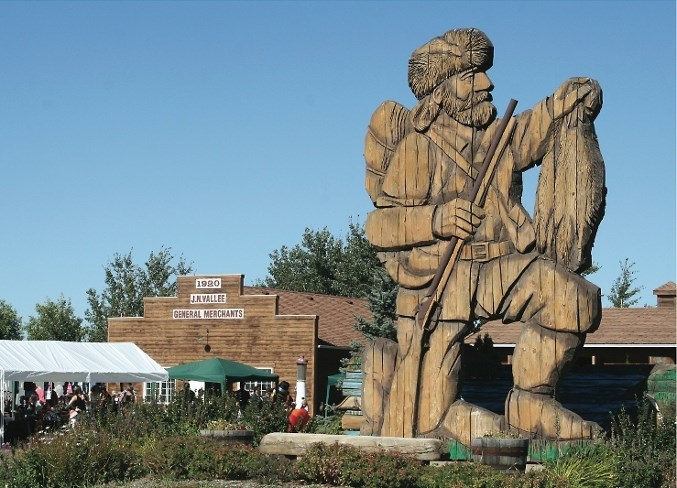Angus Shaw was a Scotsman employed as a fur trader in Canada by the North West Company, and in 1789, he made a discovery that would be a game changer for the region.
Anshaw was a settlement off of Moose Lake, named after its founder, Shaw, who discovered it while traveling the Beaver River in search of a good transport route.
“Shaw came upon Moose Lake (Lac de L’Orignal), and described it as an area teeming with fur-bearding animals,” said Sue Phillips, volunteer and board member for the Bonnyville and District Historical Society.
Although this is a story past down over generations, the local group believes they have a good idea of what happened in 1789.
Anshaw was a North West Company post called Fort Lac de L’Original on the northwest shore of Moose Lake, and is believed to be one of the first European-built settlements in Alberta.
“Shaw’s North West Company post at Moose Lake was small by comparison to others,” explained Phillips.
Manning the post were a group of men with four canoes, one of the reasons why this operation was determined minor equated to some of his later settlements.
Not long after creating the settlement, he left Anshaw and travelled down Thin Lake Creek, passing through areas like Bangs Lake, Kehewin Lake, and Moosehills Lake, until he came upon the North Saskatchewan River.
Sometime after 1771, Shaw was named a wintering partner, with shares in the company.
According to Phillips, the story indicates Shaw played an instrumental role in establishing Fort George, a settlement east of Elk Point and directly adjacent to the competing Hudson’s Bay Company.
“This is really a testament to Shaw’s feisty nature,” she said.
Years later, Shaw began working with Donald McTavish in the English River department, and helped establish a post on Lac La Biche in 1799, but wouldn’t stop there.
He sent 20 men to the mouth of the Slave River, where they build an additional settlement in direct competition with their rivals the Hudson’s Bay Company.
Shaw was a member of many clubs, and became a partner of the McTavish, McGillvrays and Company, which was affiliated with the North West Company, and travelled Fort William, now known as Thunder Bay, ON.
In 1810, Shaw was named justice of the peace for the Indian Territory.
His feisty nature came through when he took part in the destruction of the Hudson’s Bay Company’s Red River Colony in 1815, and was arrested by the Hudson’s Bay Company one year later. In 1819, he was arrested a second time, and later sent to London, where he was released.
Several years later, he retired and moved the United States, where it’s believed he married his second wife Julia Agnes Rickman, who died in 1820.
Thirteen years later, Shaw died of a lung infection in New Jersey.
Shaw’s efforts not only were a game changer for the Lakeland, but for the North West Company as a whole. His discoveries set the stage for increased fur trade and European development in western Canada.
“It’s thought that the settlement in Anshaw was used through the 1800s by fur traders and Indigenous peoples for supplies-storage, and as a spring gathering place,” added Phillips.



